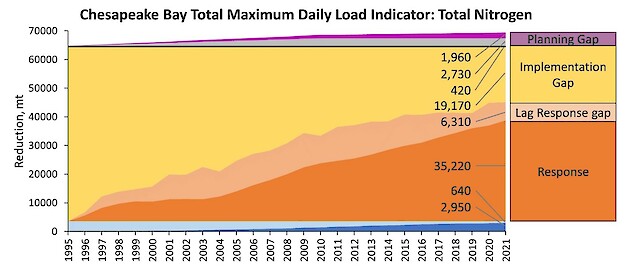Development of the Chesapeake Bay TMDL Indicator
Development of the Chesapeake Bay TMDL Indicator
To facilitate watershed management, watershed models are often developed and used to assess the expected impact of scenarios of past and future management policies and practices and the impact of watershed conditions. However, the level of load reductions estimated using monitoring data often does not match with model predictions, leading to questions around the level of effort and investment being made in restoration activities and the reliability of the model. To better reconcile such inconsistencies between expectation (i.e., modeling information) and reality (i.e., monitoring information), a watershed-wide indicator was developed for the Chesapeake Bay watershed to explicitly quantify the progress toward nutrient reduction goals in the context of the Chesapeake Bay Total Maximum Daily Load (TMDL). This indicator, which is largely based on monitoring data, can provide at least four benefits: (1) evaluating the validity of the modeled levels of nutrient reductions by comparing them to monitoring information, (2) placing the monitored riverine trends into a management context, (3) comparing progress between different sources and locations, and (4) facilitating communication of the progress to the Chesapeake Bay Program Partnership and the public.
Key Personnel

Timeframe
- Start: 2022-01-01
- Finish:
- Duration: Ongoing

